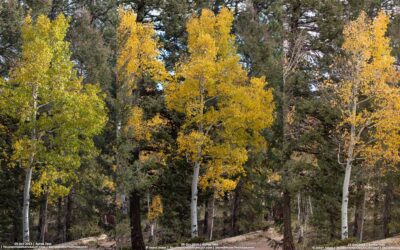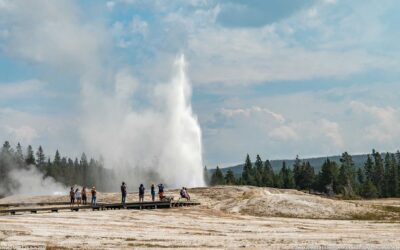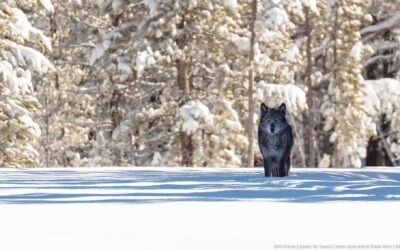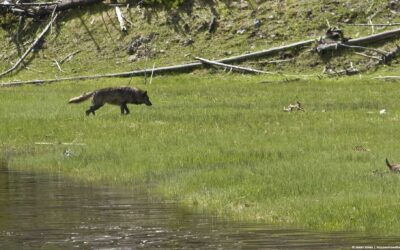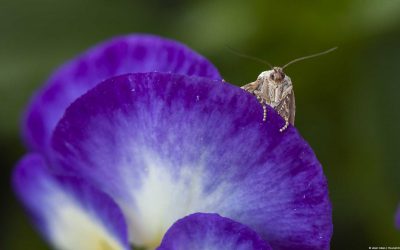KEEPING A FIELD JOURNAL
If you’re new here, this page contains a summary of the basics of keeping a field journal. This method works not only for nature journaling, but applies to any subject you want to explore more deeply. Start here and then explore other parts of this site: Geyser Watch, Phenology,
Some of the links on this page are affiliate links. That means if you use those links and purchase from the link it takes you to, I will receive a small portion of the sale (even if you purchase a different item) at no extra cost to you.
Most of the time, people think keeping a field journal only as sketching while sitting in a field of wildflowers. Yes, that’s one way to do it – and a delightful one if flowers are your thing.
Most everyone has some sort of hobby or interest that grabs them deep at the core. Yours could be:
- Fishing
- Birding
- Dog Shows
- Hiking
- Wandering back roads
- Gardening
- Reading
- Cooking
Documenting your interest with a field journal takes it to a higher level by triggering curiosity and noticing patterns and connections. This is the field journaling method that works for it all.
THE TRADITIONAL BASICS OF KEEPING A FIELD JOURNAL
Field Notes:
Take notes. Lots of them. You don’t need anything more than some way of capturing thoughts and observations. It can be digital or analog (paper and pen). Part of your field notes might include photos. This is not your journal – this isn’t the place to write out pages of scribbled thoughts. Notes. Just enough to remember.
The traditional method assumes you’re outside wandering and observing. It expects you to include in your notes and your journal:
- date and times (usually in 24 hour clock)
- weather
- a map or a description of the route you took
- sketches with notes and/or measurements
- perhaps photos.
Field Journal:
Your field journal is your finished product. The entries stem from the notes you took while out ‘in the field.’ It doesn’t matter where you keep this – in a notebook, on the computer, or in a photobook. It’s the final product.
It’s best to translate your field notes into journal entries as soon as you can – ideally the same day. The more time that passes, the harder it is to reconstruct the day. But even if you create the journal entry later on, those field notes are crucial to jogging your memory.
Posts about Journal Keeping:
Field Journal Entry: West Thumb 18 May 2020
As I work through my photos and notes to add to my field journal, I'm adding in the information here as well. When the Wyoming gates opened on May 18, 2020, my first stop for documentation photos of the thermal features was at West Thumb. In this post, I share the...
Repeat Photography Fall Project
I lived in Colorado most of my life, and I find myself missing time wandering through the mountains to drink in the color of the aspen in fall. Most every year there, the peak color fell on this week - from about the 20th to the 30th. In the posts this week, I'm...
Around Here Mid Sept 2020
This week I house sat at a friend's house. One morning while sitting on the patio sipping my tea, I could hear Sandhill Cranes in the distance - they are gathering in preparation to migrate. On Saturday, I watched a mule deer buck rubbing his antlers on a tree branch...
Species Accounts:
This is a part of your final product that’s home to specific observations for a particular species, or focus. In a nature journal, you might create sections for the local wildlife you see regularly. For example, if you have a robin nesting in a tree near your house, a section just for the more detailed observations of the robin would go into the Species Account for Robins. If you are tracking your life, each person in the family probably should have their own section. For my Thermal Journal, each geyser or hot spring that garners detailed observations has that go into their own section.
Book Review: The Rise of Wolf 8
If you've had to postpone your trip to Yellowstone this year, catching up on some of the great books out there is a way to stay connected. I'll be sharing some of the books I've been reading and recommend. Today, it's Rick McIntyre's book The Rise of Wolf 8. This post...
25 years of wolf encounters
Wolves have been back in Yellowstone for 25 years now. As a part of that milestone, I'd like to share a few memories. This post may contain affiliate links. That means that if you follow a link and make a purchase, I receive a small portion of that purchase at no...
Happy Moth Week!
In honor of moth week, I’ve put up a moth page in the species accounts section of this site. This post contains affiliate links. That means that if you follow a link and make a purchase, I receive a smallportion of that purchase at no extra cost to you. A few years...
Benefits:
Taking the step to more fully document your interests in life gives them stronger validity. At first it might feel a bit odd to write down what seems so normal, but the more you do, the more normal it feels. Plus, the more pages you add to your journal, the more you see the value of this system. Gather and build a collection of stories.
It also brings focus and mindfulness that shapes your interest into something more. This takes it to the next level of commitment by more “officially” (there are no field journal police) organizing your observations. Questions start to rise to the surface – is the Mountain Chickadee always the first one to the feeder in the mornings or does it just seem that way? Plus, if you have kids, setting the example may very well give them a sound foundation that leads them to a career in science somehow.
Examples:
This site is set up as a field journal. That said, it is not my primary field journal. That, for me, turns out to be small binders. But this website covers many topics, with a large section on Yellowstone Geysers and Hot Springs, and more items in the species accounts. There are also monthly phenology pages that track notes on the seasonal changes.
When looking for information on the traditional Grinnell Field Journal method, I came across wonderful examples here at the Museum of Vertebrate Zoology at Berkeley . There are also examples on the Smithsonian’s Field Book Project. Interestingly enough, though, Grinnell himself didn’t follow his method – personally, I think he worked at figuring it out as we all do. You start, and then figure out what works and what doesn’t and tweak as necessary until you reach a point where it all flows seamlessly.
Books on Field Journaling
- The Laws Guide to Nature Drawing and Journaling by John Muir Laws
- How to keep a Naturalist’s Notebook by Susan Leigh Tomlinson
- Keeping a Nature Journal by Clare Walker Leslie & Charles E Roth
- Illustrating Nature: Right-brain Art in a Left-brain World by Irene Brady
Books on Sketching and Drawing
- Drawing with Children; A Creative Method for Adult Beginners, Too by Mona Brooks
- Drawing for Older Children & Teens by Mona Brooks
- Fundamental Graphite Techniques by Katie Lee
- Botanical Drawing in Color by Wendy Hollender
- Botanical Portraits with Colored Pencil by Ann Swan
Books on handwriting
- The Art of Cursive Penmanship: A Personal Handwriting Program for Adults by Michael R. Sull
Products I use in the field and in my Field Journals
- Field Journal Chipboard Binder (I like to paint mine)
- Ali Edwards Page Protectors (I punch new holes to fit)
- Koi Water Color set of 24 colors
- Ann Swan Colored Pencil Set (mine is a bit different, but this is a really nice set to start with for flowers and most nature sketches)
- Pentax Papilio Binoculars 8.5×21 (small and portable, and able to see far away as well as zooming in on a flower you’re already close to – about 18″ away)
- This stand up Pen/Pencil Case
- My current favorite pen for field notes (no cap to lose, and glides across the paper with a fine line)

